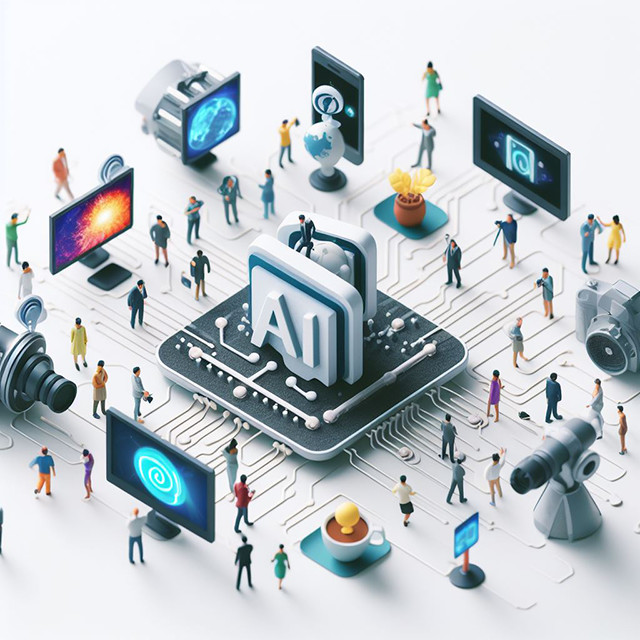Multimodal AI: Application Areas and Technical Barriers
Introduction to Multimodal AI
Multimodal AI refers to artificial intelligence systems that can understand and integrate multiple modalities of data such as text, audio, images, and video. This allows multimodal AI systems to have more robust perception, reasoning, and decision making abilities compared to unimodal AI systems that can only process a single data modality.
The key benefit of multimodal AI is that it can leverage the complementary strengths of different data modalities to obtain a more complete understanding of complex concepts and situations. For example, comprehending a news video requires making sense of both the visuals and audio narration. Processing just the audio or just the video in isolation would result in an incomplete interpretation. By combining linguistic and visual analysis, a multimodal AI system can achieve more accurate scene understanding and summary generation.
Multimodal machine learning techniques are essential for developing multimodal AI systems. Key research areas in multimodal machine learning include multimodal representation learning, multimodal fusion, and cross-modal transfer learning.
Multimodal representation learning involves developing techniques to extract feature representations from different modalities and learning joint representations that effectively combine information from the individual modalities. For visual data, convolutional neural networks are commonly used to extract visual features. For text, recurrent neural networks and transformer modelslike BERT are often leveraged to obtain semantic representations.
Multimodal fusion refers to strategies for aggregating representations from different modalities once they have been extracted. This could involve simple techniques like concatenation of feature vectors or more complex fusion methods based on gating mechanisms, attention, or graph networks. The goal is to combine modalities such that the integrated representation provides richer and more useful information than either modality alone.
Cross-modal transfer learning aims to transfer knowledge between different modalities to improve learning efficiency and model performance. For example, a model pre-trained on large amounts of labeled image data could be used to improve performance on a text classification task with limited labeled training data. The representations and patterns learned from images can help inform the model when processing textual data.
Key application areas for multimodal AI include:
- Multimedia content understanding: Analyzing social media posts, news articles, podcasts, and videos by extracting information from multiple modalities. This can enable automatic tagging, topic extraction, sentiment analysis, and content summarization.
- Human-computer interaction: Building intuitive interfaces that leverage speech, natural language, gaze tracking, gestures, and other modalities to understand user intent and respond appropriately. Multimodal chatbots and virtual assistants are examples of this.
- Autonomous vehicles: Perceiving the surrounding environment through the fusion of inputs from cameras, lidars, radars, and other sensors. This provides a comprehensive awareness of the driving scenario to enable safe planning and control.
- Healthcare: Combining inputs from medical images, electronic health records, doctor narrations, and patient descriptions of symptoms to improve diagnosis, treatment planning, and disease monitoring.
- Education: Developing engaging educational experiences through multimodal interactions leveraging speech, facial expressions, sketches, and body gestures. This can make virtual tutors and other AI-powered education tools more natural and intuitive.
- Entertainment: Building immersive experiences in gaming, extended reality, and interactive storytelling powered by multimodal AI. Inputs from cameras, microphones, and other sensors can track user movement and behavior to enable realistic interactivity.
While offering significant promise, there are also notable challenges involved in developing multimodal AI systems.
Key technical barriers include:
- Heterogeneous data integration: Seamlessly combining diverse data types like images, text, speech, and sensor inputs can be difficult given their very different representations and properties.
- Scalability: As the number of modalities increases, the complexity of data fusion and model architectures grows exponentially. Compressive fusion techniques are needed to avoid an explosion of learnable parameters.
- Weakly aligned data: Real-world multimodal data often has loose alignment or synchronization across modalities that needs to be modeled. For example, matching faces in images to speaker voices in a video.
- Cross-modal inconsistencies: Due to ambiguity in interpreting real-world data, there can be inconsistencies or contradictions across modalities that models must reconcile in a reasonable way.
Active research is developing innovative techniques in areas like self-supervised multimodal pretraining, multimodal graph neural networks, disentangled multimodal representation learning, and adversarial multimodal fusion to help overcome these challenges.
There are also important ethical considerations surrounding the development and application of multimodal AI systems. As with any AI technology, ensuring integrity, transparency, interpretability, and accountability is critical. Multimodal AI systems should be built using diverse and unbiased training data that is representative of different user populations. There should also be clear communication and consent around any data collection from users. Identity tracking through fusion of multiple modalities can raise privacy concerns that must be appropriately addressed through data minimization, aggregation, and anonymization techniques. Ongoing involvement of stakeholders throughout the full development lifecycle can help guide the responsible advancement of multimodal AI.
Multimodal AI is an emerging subfield with huge potential to enable transformative applications that understand the world through multiple sensory channels just as humans do naturally. Mastering joint processing of diverse data types remains an active research pursuit with ample room for continued innovation. With thoughtful development and ethical oversight, multimodal AI systems can become key enablers for building a more intelligent, intuitive, and immersive next generation of human-computer interaction technologies. Exciting opportunities lie ahead in Barcelona and cities around the world as multimodal AI advances to meet its vast promise and potential.
Also read:


Comments
Post a Comment